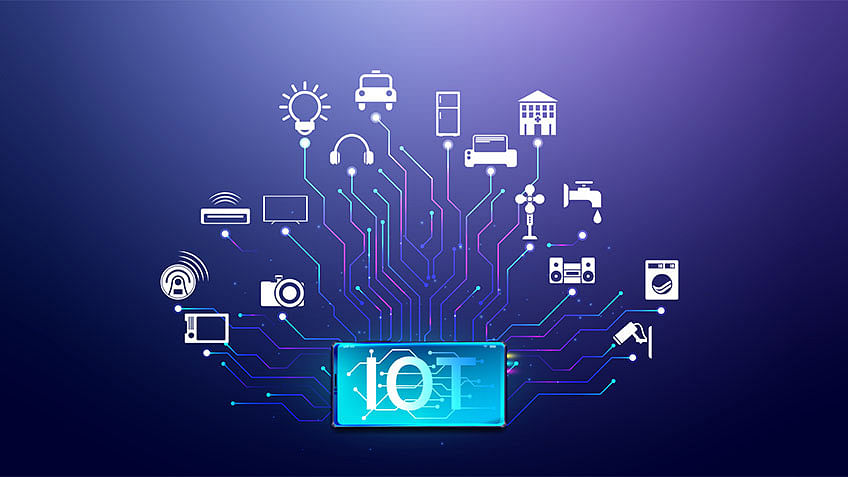IoT Interoperability Challenges: Navigating the Complexities
The world of the Internet of Things (IoT) is expanding rapidly, offering exciting opportunities for businesses and consumers alike. However, with this expansion comes a significant hurdle: IoT interoperability challenges. As more devices and systems connect, ensuring they work together seamlessly becomes a critical concern. In this article, we will delve into the complexities of IoT interoperability and explore ways to overcome these challenges.

Understanding IoT Interoperability
At its core, IoT interoperability refers to the ability of various IoT devices and systems to communicate and work effectively with one another. This involves not only connecting devices but also ensuring that data can be shared and understood across different platforms and networks. The lack of interoperability can lead to fragmented systems, increased costs, and limited functionality, which are significant concerns for businesses looking to leverage IoT solutions.
Why Interoperability Matters
Interoperability is crucial because it enables diverse IoT devices to work together harmoniously, thereby unlocking the full potential of IoT ecosystems. When devices can communicate seamlessly, businesses can achieve greater efficiency, improve decision-making, and enhance user experiences. Without interoperability, IoT systems may become isolated, limiting their effectiveness and scalability.
Common IoT Interoperability Challenges
1. Diverse Protocols and Standards
One of the significant IoT interoperability challenges is the diversity of protocols and standards used by different devices. Manufacturers often develop their own proprietary protocols, leading to compatibility issues when integrating with other systems. This fragmentation makes it difficult for devices to communicate and share data effectively.
2. Security and Privacy Concerns
Another critical challenge is ensuring the security and privacy of data transmitted between IoT devices. With multiple devices connected, the risk of data breaches increases, making it essential to establish secure communication channels. Balancing security measures with interoperability can be complex, as stringent security protocols may hinder seamless connectivity.
3. Data Silos
Data silos occur when information is isolated within individual systems, preventing it from being accessed or used across the organization. This can result in inefficiencies and missed opportunities for insights. Overcoming data silos requires developing standardized data formats and ensuring data can be easily shared and interpreted by different systems.
4. Compatibility with Legacy Systems
Many organizations have existing legacy systems that may not be compatible with new IoT technologies. Integrating IoT devices with these legacy systems can be challenging, as it often requires significant changes to infrastructure and processes. Ensuring backward compatibility is essential to leverage the benefits of IoT without disrupting existing operations.
Strategies for Overcoming IoT Interoperability Challenges
1. Adoption of Open Standards
Embracing open standards is a crucial step towards achieving interoperability. Open standards provide a common framework for device communication, allowing different systems to work together seamlessly. By supporting open standards, organizations can reduce compatibility issues and foster collaboration between devices and platforms.
2. Leveraging Middleware Solutions
Middleware solutions act as intermediaries between different IoT devices and systems, facilitating communication and data exchange. These solutions can help bridge the gap between incompatible protocols and enable seamless interoperability. Utilizing middleware can simplify integration processes and enhance overall system functionality.
3. Implementing Robust Security Measures
To address security concerns, organizations must implement robust security measures while maintaining interoperability. This involves using encryption protocols, authentication mechanisms, and access controls to protect data and ensure secure communication between devices. By prioritizing security, businesses can build trust in their IoT systems and mitigate potential risks.
4. Collaboration and Standardization Efforts
Collaboration among industry stakeholders is essential for overcoming IoT interoperability challenges. By working together, manufacturers, developers, and standards organizations can establish common protocols and frameworks that promote interoperability. Standardization efforts help create a cohesive ecosystem where devices can seamlessly interact and share information.

The Future of IoT Interoperability
As the IoT landscape continues to evolve, the importance of interoperability will only increase. Businesses must proactively address interoperability challenges to fully leverage the potential of IoT technologies. By embracing open standards, implementing middleware solutions, and prioritizing security, organizations can overcome these challenges and unlock new opportunities for growth and innovation.
For more insights on IoT and related topics, visit IoT Firmware and Gateway Design.
FAQ Section
1. What is IoT interoperability?
IoT interoperability refers to the ability of different IoT devices and systems to communicate and work together seamlessly.
2. Why is interoperability important in IoT?
Interoperability is crucial in IoT because it enables devices to share data and function harmoniously, leading to improved efficiency and user experiences.
3. How can businesses overcome IoT interoperability challenges?
Businesses can overcome IoT interoperability challenges by adopting open standards, leveraging middleware solutions, implementing robust security measures, and collaborating with industry stakeholders.
For further reading on IoT development, consider visiting IoT Product Development.


